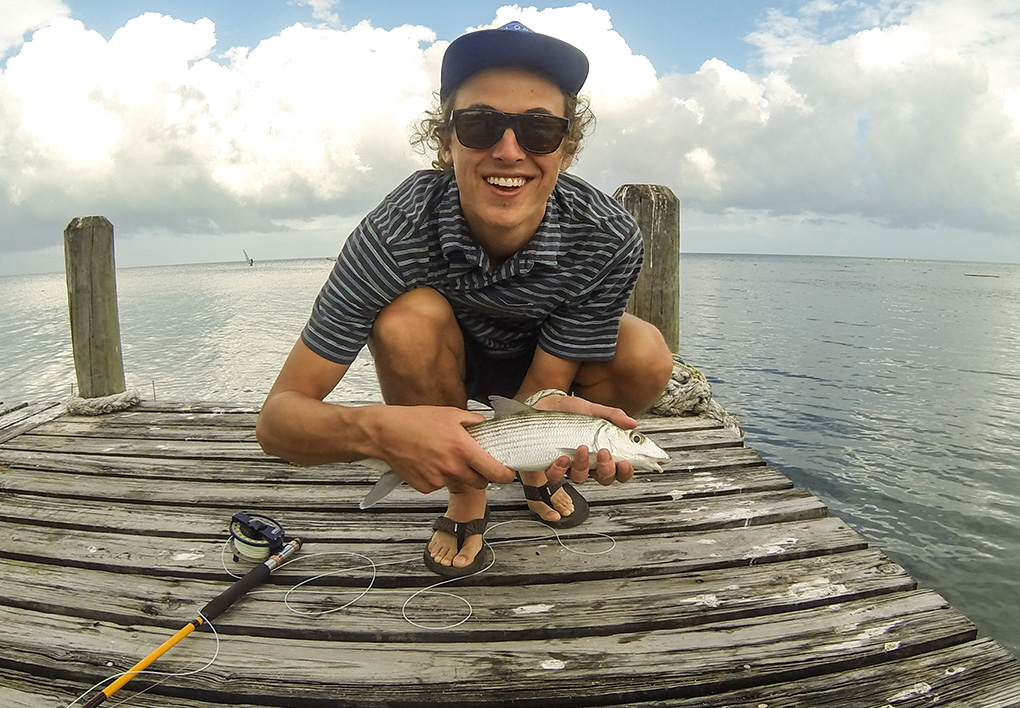When choosing a pair of sunglasses, once you’ve settled on a pair of frames, you’ll often have to choose a particular lens, since bigger brands typically offer many different polarized and non-polarized lens options for a particular frame.
(A lens is polarized when a special filter is applied to it that blocks the more “horizontally oriented,” reflected waves of light we perceive as bothersome glare: the harsh reflections on of the hood of your car, the shiny blacktop on the highway, or the surface of water, for example.)
Previously, we worked up a Smith Optics Goggle Lens Guide to help readers gain a better sense of how Smith’s different goggle lenses perform—and which ones might suit them best—and we decided to do the same here with their sunglass lenses.

In this guide, Blister Reviewers Jed Doane (JD) and Will Brown (WB) give their impressions of how some of Smith’s popular lens options (polarized and non-polarized) perform, and how they compare to one another.
We’ve included one of Smith’s “ChromaPoP” polarized lenses in the guide, and you can read about the science behind that lens technology in What is ChromaPop?
We’ll be adding to this list as we test more of Smith’s lenses. Please share your thoughts on the lens tints you like in the comments section below, and let us know if there are lenses you’d like us to check out and weigh in on.
A few notes:
1) The lenses included in the guide are (from lightest to darkest):
ChromaPop Polarized Brown Lens
Polarized Brown Lens
Polarized Gray/Green
Polarized Gray
Blackout (non-polarized)
2) “VLT” (vertical light transmission), is listed below as a numerical percentage in the description of each lens. VLT is, in short, the percentage of light in the visual spectrum that reaches the eye through a lens. It’s essentially a way to quantify how dark a lens is. See our Smith Goggle Lens Guide for a more in-depth explanation.
ChromaPop Polarized Brown Lens
Smith’s description of the ChromaPop Polarized Brown lens:

“The ChromaPop Polarized Brown lens experience is one of crisp optical clarity with enhanced contrast and amplified colorations. Perfect for the beach at sea level, or along the shores of an alpine lake. Anti-Reflective (A/R) mirror coating eliminates back glare. Hydroleophobic coating repels water, dirt, and grease. Provides 100% protection from harmful UVA/B/C rays.”
JD: I relayed my experience with the ChromaPop Polarized Brown lens in our What is ChromaPop? article, but I’ll repeat my findings here and make comparisons to the regular, non-ChromaPop Polarized Brown lens below.
Upon hearing about ChromaPop, I wondered whether or not correcting “color confusion” (see page 2 of What is ChromaPop?) would be noticeable in the first place, and if so, would it make scenes viewed through the lenses seem overly saturated or artificial? After all, color confusion is natural, and something we’re all used to.

I’ve worn Smith’s Lowdown frames with the ChromaPop Polarized Brown lenses for more than six months, and compared to Smith’s normal Polarized Brown lens, scenes do look noticeably different. The difference was most apparent when I first put the sunglasses on during a hike in the Wasatch, but it wasn’t so dramatic as to seem alien. The ChromaPop Polarized Brown lenses made scenes seem warmer than the normal Polarized Brown lens, and overall provide a very pleasant visual experience.
Upon trading sunglasses with me on our hike, a friend even remarked: “This is weird… I feel like I’m in heaven.”
The overall tint of the lens is pretty much the same as the normal Polarized Brown lens; Smith lists the VLT (vertical light transmission) of the ChromaPop Polarized Brown lens as 14%, while the Polarized Brown lens is listed at 15%, but I can’t detect any difference in how dark the two lenses are.
My eyes adjust to ChromaPop quickly, and the lack of eye fatigue is noticeable over the course of a day outside or on long drives.
All in all, ChromaPop lenses are solid for everyday use, but they really shined on a three day fly fishing trip to a small creek near Torrey, Utah. I’ve used polarized sunglasses while fishing in the past, but spotting fish was noticeably easier through the ChromaPop lenses, especially the red coloration on cutthroat trout.
WB: I haven’t had the chance to try out a pair of ChromaPop lenses just yet, but will weigh in on their performance as soon as I’m able.
NEXT: Polarized Brown, Polarized Gray/Green, Polarized Gray, Blackout
